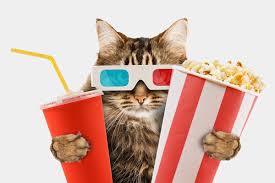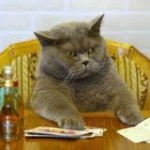 Last post, we talked about how watching movies can help you improve your fiction. Now let’s highlight some more easy-to-implement techniques borrowed from cinema.
Last post, we talked about how watching movies can help you improve your fiction. Now let’s highlight some more easy-to-implement techniques borrowed from cinema.
Writing Tip for Today: What are some other cinematic techniques for writing fiction?
Establishing Shot to Cliffhanger
Movies often open with a vista or panorama—that is, the camera starts with a wide-angle shot and slowly either pans the landscape or moves closer. This technique helps to set the scene—audiences learn the general area (setting), time period and other details, sometimes even before a character is on stage. For instance, in the film classic “Doctor Zhivago,” we see the wide Russian expanse. In John Steinbeck’s East of Eden, the opening line is: The Salinas Valley is in Northern California. It is a long narrow swale between two ranges of mountains, and the Salinas River winds and twists up the center until it falls at last into Monterey Bay. In both examples, readers/viewers get the idea of a wide-angle landscape that shows the settings but also sets the tone for the story.
A cliffhanger is also a great way to keep readers turning pages, but the technique originated in cinema. You lead your reader to a point of danger, an unexpected or unfamiliar event and then abruptly cut off the scene at the point of highest tension. Readers will have to keep reading to learn the outcome or what the event means to the story. The art is to keep them waiting long enough for full benefit but not so long that they lose interest or become confused.
Jumping Around
In film, the camera can speed the pace or introduce new scenes that move the story forward by using jump cuts, fade outs, dissolves and zooms. A jump cut might be used to go back and forth between scenes, and a fade out might leave a scene more ambiguous and thus more interesting and artful that a pat ending. Dissolves and fade outs are similar, but with a dissolve, often one object stays the same in both scenes. Think of Snow White as she confronts the poisoned apple. The scene dissolves with the apple staying in both scenes while Snow White morphs into the wicked queen. In films, zooming in heightens tension and/or emotions and quickens the story pace. In writing, a zoom translates to a closeup with short or fragmented sentences, heightened alertness or emotion on the part of the POV character and highlights a brief but important moment in the story. If you “zoom in” on something early in the story, you’re telling your reader: Remember me! I’m important. If you don’t come back to that close-up subject or it plays no significant role in the story, readers will be at best confused and at worst irritated.
Don’t Forget Lights!
In movies, lighting is important to establish mood and tone. You can also use your description of light in a scene to reflect your character’s mindset, mood or emotions. Is it bright, hot, sunny? Or is it gray and overcast? Filmmakers will often wait until dawn or just before sundown to film–these are Golden hours, when the light is warm and makes actors look better. Combined with a “zoom-out” technique, lighting can manipulate readers into relaxing just before a startling development. Here’s an example from Charles Dickens’ Bleak House:
He looks up casually, thinking what a fine night, what a bright large moon, what multitudes of stars! A quiet night, too.
A very quiet night. When the moon shines very brilliantly, a solitude and stillness seem to proceed from her, that influence even crowded places full of life. Not only is it a still night on dusty high roads and on hill-summits, whence a wide expanse of country may be seen in repose, quieter and quieter as it spreads away into a fringe of trees against the sky, with the grey ghost of a bloom upon them; not only is it a still night in gardens and in woods, and on the river where the water-meadows are fresh and green, and the stream sparkles on among pleasant islands, murmuring weirs, and whispering rushes; not only does the stillness attend it as it flows where houses cluster thick, where many bridges are reflected in it, where wharves and shipping make it black and awful, where it winds from these disfigurements through marshes whose grim beacons stand like skeletons washed ashore, where it expands through the bolder region of rising grounds rich in corn-field, windmill and steeple, and where it mingles with the ever-heaving sea; not only is it a still night on the deep, and on the shore where the watcher stands to see the ship with her spread wings cross the path of light that appears to be presented to only him; but even on this stranger’s wilderness of London there is some rest….
What’s that? Who fired a gun or pistol? Where was it?
In this example, Dickens sets up readers for a gasp, as a gunshot rings out. It’s one more example of how writers and filmmakers manage their readers by luring them into relaxing, only to smack them awake with something unexpected. All these film-making techniques are useful to writers as we create a world for our readers to enter—just as on the silver screen.





Hi, loved it! Shared it in my group. Your link to Facebook is broken. Also not an easy place for me to sign up.
Luisette,
Sorry about the link but thanks for letting me know–I’ll get on it. The blog post seems to be broken too? At any rate, I hope you’ll come back for more tips. Like me on Facebook.com/Lindaclarebooks too–the FB page should show the links to this blog.
Keep Writing!
Linda
Cool timing! This very week a writer friend and I were discussing scriptwriting and wondering what online courses would be good to check out. When I wrote inspirational romances for Zondervan years ago, my strong suit was dialogue, so I’m thinking about translating those into scripts. Your post helps. Thanks, Linda.
Wow Mary,
That is cool. Movies are really valuable tools for writers–and I’m not really a movie buff!
Thanks for your support.
Keep Writing,
Linda